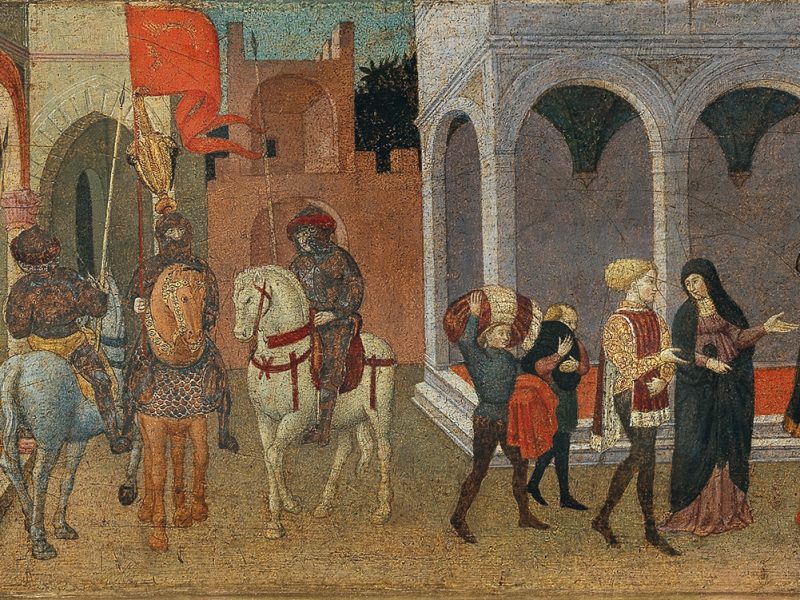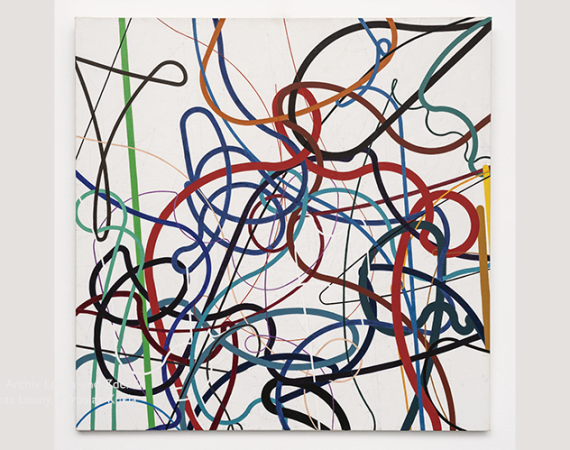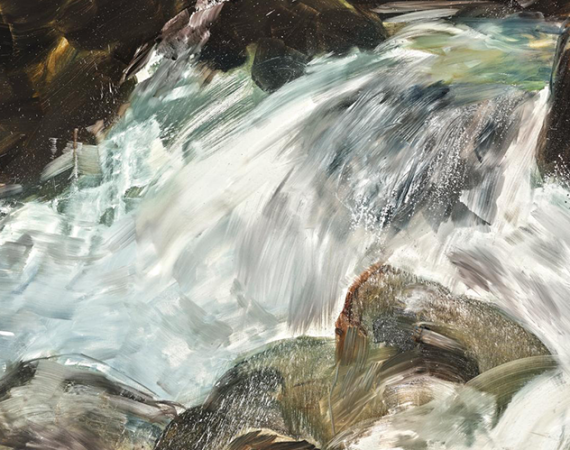
PRECIOUS DOWRY
As part of a dowry, marriage chests, so-called cassoni, were widespread in Italy during the Renaissance. Designed and manufactured by masterful hands, they were intended to exhibit social status and wealth.
Cassoni
This painting on a wooden panel originally formed the front of a lavishly decorated marriage chest, or cassone, which was a popular form of decorative furniture in Renaissance Italy. These chests, or cassoni, were intended for the storage of personal belongings and frequently adorned with paintings and pastiglia ornament. They were often included as a part of a bridal dowry and displayed the social status, wealth, and sophistication of the intermarrying families. These chests were widespread in Northern and Central Italy, particularly in Tuscany, between the fourteenth and sixteenth centuries and were made by specialists who produced them, and other commemorative objects, to mark important occasions.
The current panel, which is for sale at Dorotheum in the Old Master Paintings auction on 10 November 2020, is still contained within its original setting of silver-gilt entablatures and gilded, fluted pilasters, on which we can still see the pastiglia supports for a coat-of-arms which would originally have contained the heraldic symbols of the two families of the couple for whom the cassone was made.

Story of Trajan and the Widow
The painted panel depicts two episodes from the Story of Trajan and the Widow, a popular theme in the Middle Ages, thanks to the story’s retelling in the well-known Golden Legend, occurring on various painted nuptial cassoni of the fifteenth century. According to the legend, the son of the Roman Emperor Trajan, on his departure with the army on an expedition to the Orient, killed a man, trampling him with his horse. The mother of the man, a widow, halted the Imperial procession, claiming compensation for the loss she had suffered. The present painting depicts the second part of the story: the Emperor is depicted on the left, enthroned beneath a loggia, meting out justice to the widow, who kneels before him, whilst the youth is restrained by guards. In compensation to the woman, Trajan’s judgment is to present her in marriage to his son, additionally endowing her with numerous gifts. On the right-hand side of the picture, the newly married couple can be seen making their way to their home, accompanied, in accordance with tradition, by a nuptial cortège bearing the rich dowry, which includes gilded furnishings and, significantly, a cassone.

Florentine School of the 15th Century
It is likely that this current panel derives from one of a pair of marriage chests, and that the rest of the story was told on the panels of the second chest. It was probably painted in Florence around 1450 and is certainly the work of an artist of great refinement, as demonstrated by the elegant figures, the well-ordered composition and the skilfully represented Renaissance architecture. The work was initially believed to be by the hand of the younger brother of Masaccio, who was known as ‘Lo Scheggia’, but this attribution was later disputed. Most recently its authorship has been suggested to be the Florentine artist, Domenico di Michelino (1417–1491).
This work was part of the important collection of early Italian Renaissance paintings of the Earls of Ashburnham during the nineteenth century and through the first half of the twentieth century, which included several cassoni.
AUCTION
Old Masters, 10 November 2020
Palais Dorotheum, Dorotheergasse 17, 1010 Vienna
old.masters@dorotheum.at
Tel. +43-1-515 60-403













